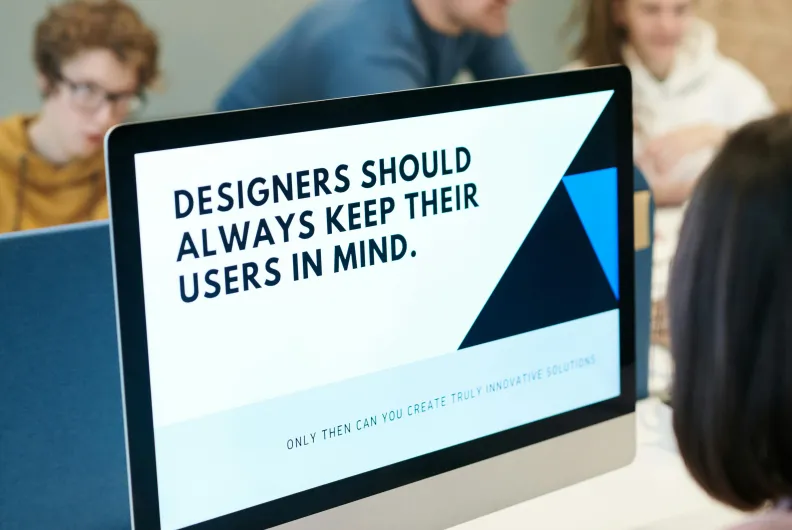A Glossary of Key Accessibility Terms
As we wrap up Accessibility Awareness Month, it’s a great moment to reflect on the role each of us plays in creating more inclusive digital experiences. Whether you’re a marketer crafting campaigns, a designer shaping user journeys, a content editor publishing pages, or a web manager overseeing platforms — accessibility is a shared responsibility that ensures everyone, including people with disabilities, can access and engage with your content.
Although not extensive, this glossary brings together essential terms and trusted resources to help deepen your understanding of accessibility. By building a common vocabulary across teams, we can make more informed choices, create better user experiences, and embed accessibility into our everyday work — not just during May, but all year round.
Accessibility Checker
A tool that scans websites or web content for accessibility issues based on standards like WCAG. Accessibility checkers can help identify problems such as missing alt text, low contrast, or poor heading structure.
🔗 Tools like WAVE by WebAIM and Lighthouse by Google are two commonly used tools that offer insights and suggestions to help improve accessibility during design and development.
Alternative Text (Alt Text)
Descriptive text added to images to convey meaning to users who cannot see them, typically used by screen readers.
ARIA (Accessible Rich Internet Applications)
A set of HTML attributes that enhance the accessibility of dynamic content and user interface components, especially for assistive technologies.
Contrast Ratio
The difference in luminance between foreground (e.g., text) and background colors, crucial for readability. WCAG sets minimum ratios (4.5:1 for normal text).
🔗 WAI: Contrast and Color Accessibility
Captioning
Text versions of spoken word and sounds in videos, necessary for deaf and hard-of-hearing users.
Decorative Images
Images that don’t convey meaningful content and can be hidden from screen readers using empty alt attributes (alt="").
Descriptive Links
Hyperlinks that clearly describe their destination or action (e.g., “Download the annual report” instead of “Click here”). Improves usability and SEO.
Disability
A physical, cognitive, or sensory condition that may affect how someone interacts with digital content. Accessibility benefits everyone, including people with temporary or situational impairments.
🔗 Understanding Disability
Focus Indicator
A visual highlight (like a border or underline) that shows which element is currently selected via keyboard navigation (e.g., with the Tab key).
Headings (H1–H6)
HTML elements used to organize content hierarchically. Proper use helps screen reader users and improves navigation.
Inclusive Design
A design approach that considers the full range of human diversity — including ability, language, culture, gender, and age — at the outset. This means setting out to create content and visuals that reflect and respect diverse audiences.
Keyboard Navigation
The ability to use a website entirely via keyboard (Tab, Enter, Arrow keys), without requiring a mouse.
Plain Language
Writing that is clear and easy to understand, beneficial for people with cognitive disabilities or limited language proficiency.
Readable Fonts
Choosing typography that is easy to read for people with visual or cognitive disabilities. Avoid overly decorative fonts or text embedded in images.
Responsive Design
An approach to web design that adapts to various screen sizes and devices, which also benefits users with zoom/magnification needs.
Screen Reader
A software application that reads out text and navigational elements on the screen for blind or low-vision users.
🔗 WAI: How Screen Readers Work
Semantic HTML
HTML that conveys meaning (e.g., using <button> instead of <div>) to assistive technologies.
Skip Link
A hidden link at the top of a page that lets keyboard users skip to the main content, bypassing repetitive navigation.
Tab Order
The sequence in which elements are selected using the Tab key. It should follow a logical, intuitive order for usability.
Text Alternatives
Any non-text content (images, icons, multimedia) should have a meaningful text equivalent.
Usability
The ease with which users can interact with a site — closely aligned with accessibility.
🔗 WAI: Accessibility and Usability
Visual Impairment
A range of vision conditions that can affect how users perceive digital content; may include blindness, low vision, or color blindness. Accessible sites must support a wide range of visual needs.
Voice Recognition
Assistive technology that allows users to control devices and input text using spoken commands.
WCAG (Web Content Accessibility Guidelines)
International standard for accessible web content (current version: WCAG 2.1/2.2). The guidelines are organized under four principles: Perceivable, Operable, Understandable, Robust (POUR).
🔗 WCAG 2.1 Quick Reference
🔗 WCAG 2.2 Overview
WAI (Web Accessibility Initiative)
A W3C project developing guidelines and resources to make the web accessible.
🔗 WAI Homepage
Contributors









